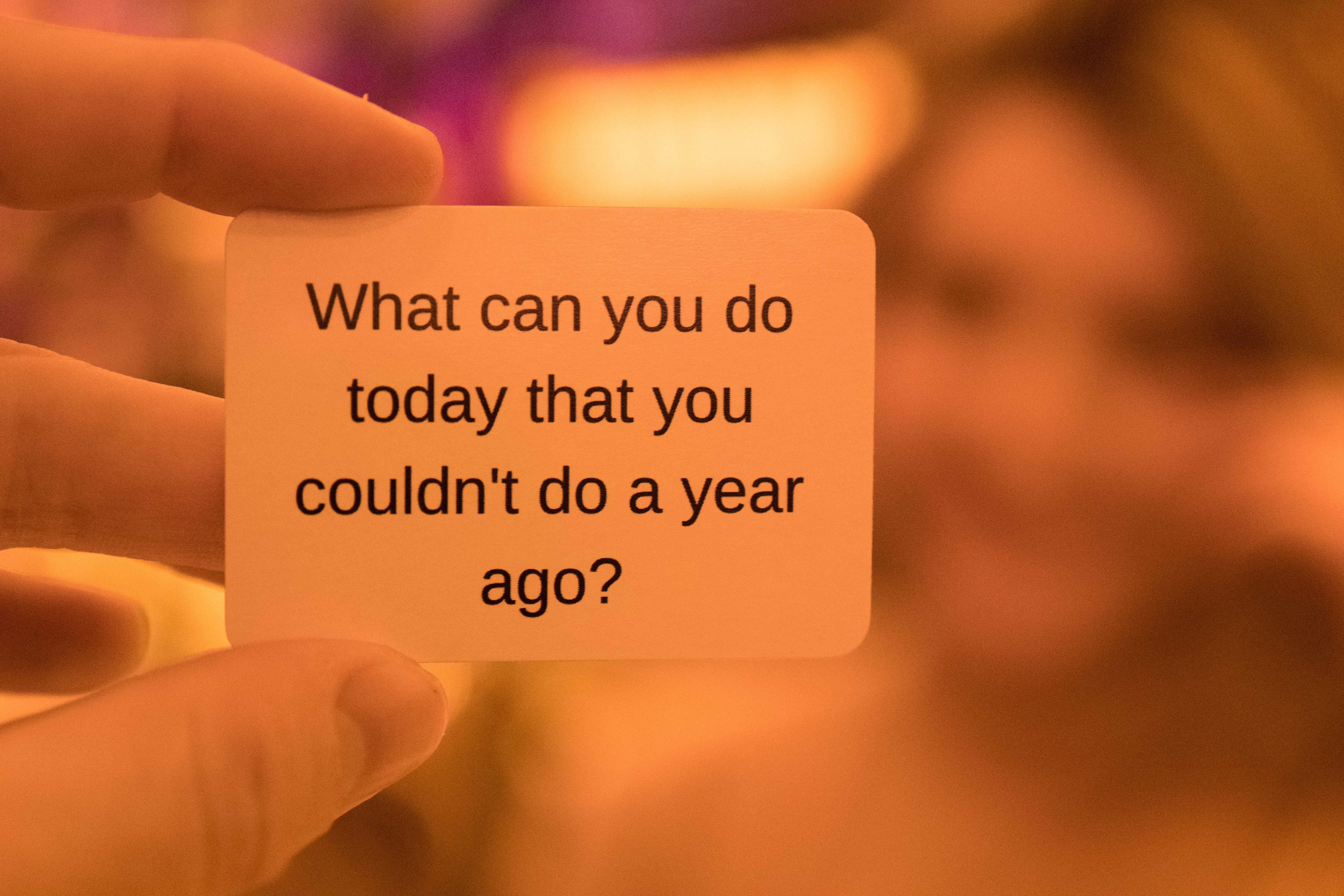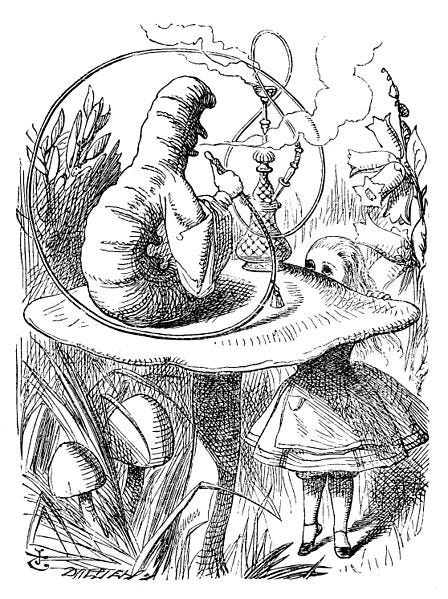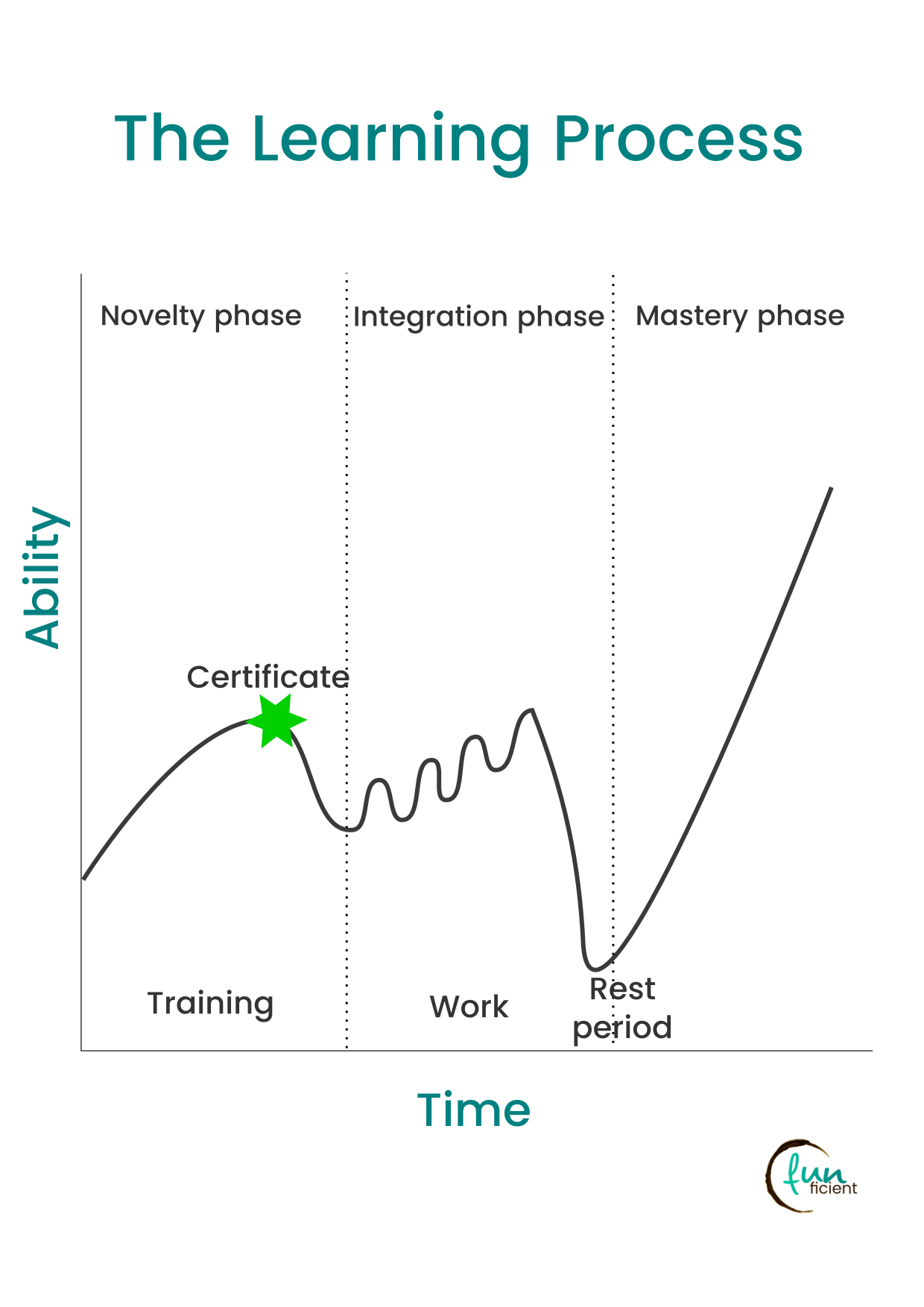
How to grow an agile mind
Ask better questions. Get better answers.
The Scrum Guide teaches the tools of the trade. How to plan, estimate and organize your teams. Which ceremonies to run and how to facilitate them. Yet, many teams adapt these ceremonies without ever adapting the agile mindset. Why is that?
And more importantly, how do you learn how to think more agile?
The case for an agile mindset
Agility doesn’t have anything to do with Scrum, the Agile Manifesto or XP (or any other tool or process for that matter). Although Scrum is an inherently agile process, you don’t need Scrum to be agile. Similarly, the Agile Manifesto is a bunch of values and principles. It’s a guide that helps you become more agile. Following these principles doesn’t, however, guarantee that you will grow an agile mindset. XP, in my opinion, is the closest set of tools to grow agility, yet, it still doesn’t guarantee agility.
Essentially you only need two things to guarantee agile thinking, rather than merely doing agile (and learning the Scrum Guide or Agile Manifesto isn’t one of them). To think agile — first of all you need an extreme ability to learn. You need to ask more questions. And you need to ask better questions. Second, you need to be comfortable with change and failing.
An agile mind is a mind that is able to learn and use new information effectively.
The paradox of mind
I’m interested in how the mind works. Always have been. Not thinking hurts my brain.
Questions I typically ask include: How do we remember things? What exactly is memory? How do we learn? How do we come up with new ideas? How do we think? How can we think better?
What I discovered is that our mind is a paradox. And that paradox is the key to an agile mind.
We all know about the left-logical and right-creative sides of the brain. However, there seems to be a different, unexplored dimension of the brain (or maybe it has already been explored and I just haven’t discovered it yet) separating the inside (unconscious) and outside (conscious) sides of the brain. Or, to simplify for illustrative purposes and compared to the well known ice-berg metaphor, splitting the top of the ice-berg or consciously used brain and the bottom, unknown and mostly unused part of the ice-berg or brain.

Image by funficient
On the one (unconscious) side, it’s built for optimization, learning from past experiences. It allows us to do or recognize things without even thinking about it. We can cross the street or drive to work without consciously thinking about it. We can recognize an object like a coin without being able to recall the details. Yet, we can tell immediately if it’s one currency or another.
Go ahead and try it yourself. Try to draw the coin you most frequently use. Can you remember what objects and images and shapes are on the coin or note?
If you’re still not convinced, I highly recommend reading The Power of Habit by Charles Duhigg, a more in-depth look at how habit helps you achieve success, and also how powerful repetition is.
On the other — opposite — side, the mind is built to learn new things more consciously. This part of the brain is wired to create and plan for the future, experience new things, and search for novelty. This is the part responsible for innovation.
Interestingly, this part of the brain is also linked to happiness. In his research on how the mind works Edward de Bono discovered (without it being the subject of his research) that insight (aka becoming aware of new information) or learning is always linked to spontaneous laughter.
It turns out that discovering or learning something new makes us happy. Dreaming about the future or making plans for an event that hasn’t yet occurred, brings us joy. It’s a different kind of thinking to the thinking we use to recognize a coin or cross the street.
An agile mind is a mind that is fully used — all four quadrants of it. A mind that explores the unknown future as much as it remembers the past. One that follows procedures and rules as much as it creates new ideas and try out new things.
An agile mind is a whole mind.
So how do you learn how to think agile?
1. Become an extreme learner
The more tools in your tool-set, the more efficient and effective you can apply the right tool to solve the right problem at the right time. It allows you to be more agile.
If you only use TDD (test driven development) to verify code, or only play planning poker to estimate, or only use Jira for task management, or always follow the same process to anything, you’re not agile.

The Caterpillar from wikipedia.org
In fact, whenever you answer ‘Always’ or ‘Only’ when asked how to do anything, you’ve failed the agility test. You’re agile when you can easily think of and use at least 3–5 methods to solve a specific problem.
“Why, sometimes I’ve believed as many as six impossible things before breakfast.” — Alice in Wonderland
To become an agile thinker, learn everything. Read up on topics that will make you a better designer, developer, tester, product owner… Go to conferences and meetups. Read books, listen to podcasts, subscribe to blogs of people that inspire you.
But don’t stop there. Also learn about things that scares you. If you’re a business owner, learn how to code. If you’re a programmer, learn more about design.
But don’t stop there either. Learn about fields that aren’t directly related to your domain or anything for that matter. Learning how to make soap was probably one of the most profound (and insightful) learning experiences I’ve ever had. I knew nothing about it and science was my worst subject at school as I simply wasn’t interested in it. Soap, however, is all about science and understanding the properties of each oil and getting the ratios between the different properties right. It taught me to trust, to have an open mind and to experiment (and fail).
Learn how to cook a cuisine you’re not familiar with, or how to be a beekeeper or a barista. Above all, learn a new language. Learning a new skill is relatively easy as someone has already figured out exactly how it works and how to learn it. Learning a new language, though, is much more complex. Language requires you to learn the rules (grammar), the sounds, the vocabulary, and the structures like most other new topics. But it also requires you to understand the culture — the unwritten rules that most people don’t even realize exist. Those slang words only used by the locals, the intonations that distinguishes the moods and emotions. The body language and gestures.
The antidote to arrogance
Many people tend to specialize in a single field or industry. And most recruiters evaluate seniority with the amount of time spent applying one skill, further shaping this trend. They are a C# or Java developer. They are a Product Owner in the financial industry.
Inevitably, however, specializing in any field tends to make you arrogant because you tend to know all the answers pertaining to your subject field. If you think everyone you work with is an idiot, and you never make mistakes, you might want to re-evaluate.

5 Steps Towards Mastery in Learning
Learning new things help you realize how little you know and how much there is to learn. It opens you up to possibilities. To think in new ways. It helps you question things more, which helps you innovate and improve more.
If you aren’t truly tool or language agnostic, you’re not agile.
An agile mind can pick up any tool or language within hours. An agile mind has mastered how to learn, not merely learning one thing.
For more on how I experience the process of learning, read The 5 Steps Towards Mastery in Learning. The training course serves mostly as a tool to raise awareness of what you don’t know yet. The real learning only starts when you apply the learned skills in different situations and mastery usually follows a period of rest or letting go.
2. Be comfortable with failure and change
The second part of growing an agile mindset is probably even more important than the first, mostly because society has taught us to believe failure is a bad thing so we tend to avoid it at all cost.
Most people don’t like to fail. They don’t like change either, as it slows them down and risks possible failure. However, agility is ultimately a change methodology.
Agility is your ability as organization to sense and respond to changes quickly enough to enable you to remain competitive and profitable.
And when you change the way you’ve done things in the past, you’re bound to make mistakes. Even if you don’t make any mistakes, the change might uncover a mistake in a different part of the system that was previously hidden.
An agile mind is a flexible, curious, ever-learning mind. The opposite of rigid and habit-driven. Inherently that requires you to be willing to fail.
To become more comfortable with failure, start by opening yourself up to the possibility that you could be wrong. Look for how other people are right when you’re in discussion with them, rather than focusing your attention on finding proof for how you are right, or how they are wrong.
Practice making mistakes in a more playful environment. Dedicate a story to experiment with a new technology in a sandbox or code branch that won’t affect the live code. Or spend your slack time (or did you forget those exist?) testing out a new skill.
When you do make a mistake, share your failure. Admit you were wrong and if it affected other people, apologize. Go ahead and try it. It’s extremely liberating to apologize for your mistakes.
Play more
Children are masters in learning. They also spend most of their time playing. Where a game is a framework for learning, play is a framework for exploring and experimenting. It’s a forgiving space where you can make mistakes without the consequences of real life.
Spend more time playing to get accustomed to being wrong. Join associations like the ToastMasters to practice a skill in front of people that you’re not comfortable with, with permission to receive feedback on areas that need improvement.
By far the most useful tool I’ve found to become more vulnerable and open to failure, is booking coaching or counseling (even if you think you don’t need it) with someone you trust. It’s a safe space where you are able to share your issues without judgement. It teaches you to share your failures and receive feedback, but without the risks associated with doing the same at work. Once you’ve done this enough, it becomes more natural. It also teaches you to open up to different possibilities and a good coach will hold you accountable to try new behaviors, making you more comfortable with change.
Once you’re willing to admit you don’t know all the answers, and able to find more answers faster, the result is agility.
Looking for an agile coach? Visit www.funficient.com.
Originally published on Medium: https://funficient.medium.com/how-to-grow-an-agile-mind-356654e4229a
